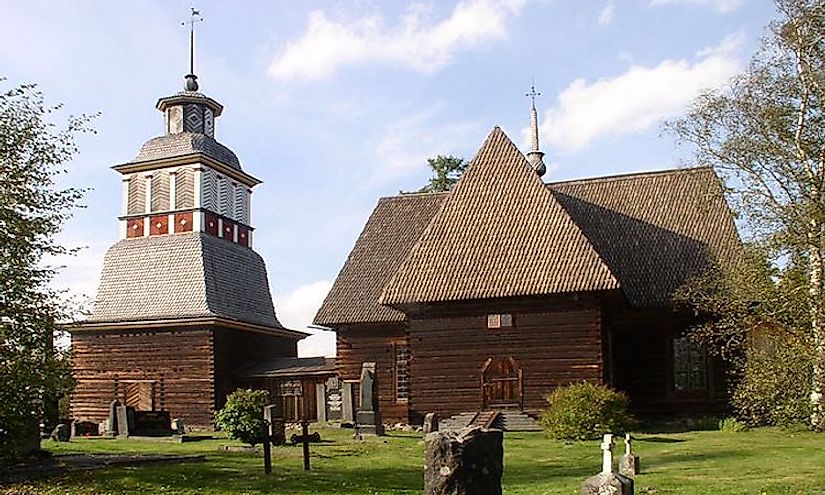UNESCO World Heritage Sites In Finland

Finland is a unitary parliamentary republic located in northern Europe. Helsinki Is the capital as well as the largest city in the country. One of the primary income earners in Finland is tourism. The state received over eight million tourists in 2013, and the number is increasing annually. Some of the country’s tourist attractions include; 37 national parks, pine forests, cultural activities in the urban areas, and lake cruising. The country is also home to seven UNESCO world heritage sites with six of them being cultural sites and one is inscribed as a natural site.
UNESCO World Heritage Sites In Finland
Rauma Historic City And Harbor
Rauma is a wooden city located in Satakunta region in the southern parts of Finland. It is unclear as to when Rauma was settled, but it achieved the status of a town in the 14th century. In 1550, the residents of the city were ordered to relocate, but the order was futile. The town was made up of wooden houses and was adversely affected by fires in 1640 and 1642. Rauma had one of the largest fleet of sailing boats in 1897, and it acted as an important harbor in exporting goods to Germany and the Baltic States. After World War II, the town became an industrial city dealing with shipbuilding, paper, and pulp mills. The harbor is the fifth largest port in the country and handles an average of six tons of cargo annually. Since the period, the own plan structure has been maintained to date. The government of Finland has taken several steps to ensure the protection of Rauma including appointing a site manager. The main threat facing this old town is climatic change. High humidity and temperatures in winter provide ample environment for proliferation of harmful insects into the timber structures.
Petajavesi Old Church
Petajavesi Old Church is a wooden church that was built between 1763 and 1765. It was in use until 1879 when a new church was built. It was inscribed as a heritage site in 1994. The resident at that time sought permission from the crown to build a church at Petajavesi as the Church at Jamsa was far away. Jaakko Klementipoeka was both the planner and the architect of the church for two years and finished the job in 1765. The first renovations were made in 1821, where the windows were enlarged, the sacristy moved from northern parts to the east, and a bell tower added. The roof of the church resembles the earlier Gothic architectural style. The old church had been abandoned after the construction of the new one until an Austrian historian, Josef, discovered its historical value in the 1920s. Since 1929, the church has been managed and severally restored.
Sammallahdenmaki Bronze Age Burial Site
This is a Bronze Age cemetery located in Lappi municipality having 36 granite burial piles dating back to 500BC. It is located on a hill less than ten miles from the coast of Bothnia. In 1891, Volter Hogman excavated four of the pies for research purposes. The state protects the site via legislation. Tourists visiting the area are directed to use specific routes to reduce the threat of vegetation on the site.
Struve Geodetic Arc
The Struve Geodetic Arc is a chain of survey triangulations that stretches over nine million feet from Norway to the Black Sea. It was used by a Russian scientist Friedrich Struve in 1816-1855 with the aim of establishing the shape and the size of the earth. The arc consisted of 258 main triangles and 265 main station points. It was the first time a very long distance was exactly measured. This marked an important step towards the study of earth sciences. Up to date, all the points have been maintained in the same original position. Protection of the site is done by all the states where the arc passes. A committee has also been made with membership from all the nations sharing the site where they meet to discuss the management of the site.
UNESCO World Heritage Sites In Finland
| UNESCO World Heritage Sites in Finland | Year of Inscription; Type |
| Kvarken Archipelago | 2000; Natural |
| Petäjävesi Old Church | 1994; Cultural |
| Rauma Historic City and Harbor | 1991; Cultural |
| Sammallahdenmäki Bronze Age Burial Site | 1999; Cultural |
| Struve Geodetic Arc | 2005; Cultural |
| Suomenlinna Fortress | 1991; Cultural |
| Verla Groundwood and Board Mill | 1996; Cultural |







